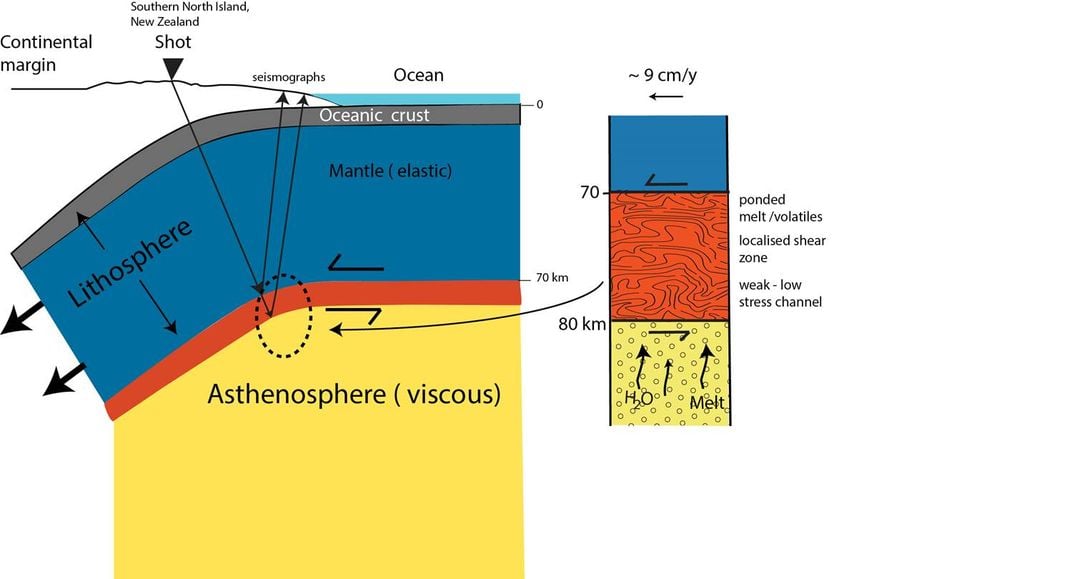Scientists Have Imaged the Base of a Tectonic Plate
The discovery of a slippery layer off the coast of New Zealand could help explain plate movement
/https://tf-cmsv2-smithsonianmag-media.s3.amazonaws.com/filer/fd/59/fd59fa79-e3d3-47e1-9033-87479cb8fedb/lc001476.jpg)
By setting off explosions and listening for their reverberations deep inside Earth, scientists have taken the equivalent of a CT scan of the base of a tectonic plate. The results show that the base has a thin, slippery layer that may help the plate move across a more viscous layer of rock below—and may explain what drives plate tectonics.
The theory of plate tectonics describes how the plates of rock that make up Earth’s rigid shell, the lithosphere, jostle around to form structures such as continents, mountains and deep ocean trenches. The theory explains key aspects of the planet, including continental drift, earthquakes and volcanoes. But the theory of plate tectonics has only been around for 50 years, and scientists are still working out many of the details.
Tim Stern of New Zealand’s Victoria University and his colleagues wanted to better understand earthquake hazards in the region of Wellington, New Zealand. Several years ago, the team set out a series of geologic listening posts along a line across New Zealand where the Pacific plate subducts, or dives beneath, the Australian plate. They drilled a series of holes along that line, packed the holes with explosives, topped off the holes with gravel and set off the explosions one by one. The researchers then used the listening equipment see how the resulting seismic waves moved through the plate, allowing them to create an image of what they could not directly see.

The researchers were surprised to find that their data let them see some 62 miles below the surface, a region that includes the base of the subducting Pacific plate. At just 45 miles thick, the plate was thinner than had been thought, the team reports today in Nature. The boundary region between the plate and the viscous layer below, called the asthenosphere, was also much thinner at only about 3,200 feet. Just below that was a 6-mile-thick channel—possibly containing water or melted rock—that the researchers say lubricates the movement of the plate, similar to how a thin layer of melted water under a set of skis helps a skier glide across the snow.
According to Stern, the findings have important implications for figuring out the forces that act on tectonic plates and how the plates move. There are two competing theories about what drives plate movement: One holds that convection in the deep mantle drives plate tectonics. The second theory says that the plates move due to forces that pull and push at the edges where they subduct beneath their neighbors. A thin slippery channel, like that found in the new study, would decouple the plate from the mantle, Stern says, making the convection theory less likely.
The research may also explain a long-standing mystery of the Hawaiian Islands. The island chain was created by a stationary hot spot where magma is driven to the surface. As the Pacific plate above the hot spot moves, the volcanic forces create new islands. Somehow the chain took a 30-degree change in direction several million years ago, Stern notes. That turn has troubled geophysicists, he says, but a theoretical study had predicted that a low-viscosity layer under the plate could explain the phenomena—a layer like the one just found in New Zealand.
/https://tf-cmsv2-smithsonianmag-media.s3.amazonaws.com/accounts/headshot/Sarah-Zielinski-240.jpg)
/https://tf-cmsv2-smithsonianmag-media.s3.amazonaws.com/accounts/headshot/Sarah-Zielinski-240.jpg)